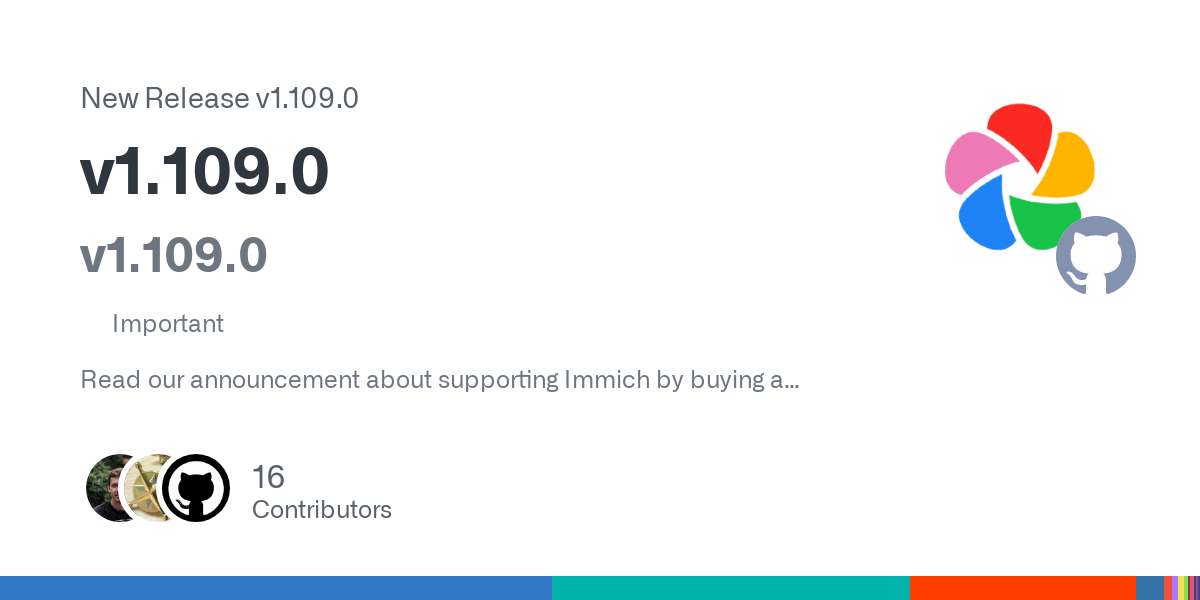Welcome to version v1.109.0 of Immich. This release introduces an additional way for you to support Immich financially as well as bug fixes for various issues. Some of the highlights in this release include:
- Immich licenses (and https://buy.immich.app)
- “My Immich” url forwarder (https://my.immich.app)
- Notable fix: Generate thumbnail for iOS18 HEIC
- Notable fix: Generate Motion Photos for Pixel 6, 7, and 8
Immich license pricing is $25 per user or $99 per server for a lifetime license.



So you trust your phone and its closed source OS with your photos, but your Linux server can’t see them?
I’m having a hard time imagining what Immich could do other than file syncing in this scenario
My phone isn’t closed source. And no, I don’t trust it fully either, I limit the amount of trust given to any datastream to the minimum necessary to get the functionality I want.
If you wanted a client side encrypted image service, yes syncing would be a major benefit, or you do the image tagging/scanning client side before going to the cloud, or after the fact. Just limit where the unencrypted data exists in the system.
Ok, that’s totally fair. Your needs are valid, but most of us just want a self-hosted google photos replacement that’s good enough our families won’t complain. Just being self hosted improves security and privacy immensely; E2EE would be an incremental improvement in this regard while having major drawbacks for usability.
oh yeah, 100%; I like the focus of immich, I like that it exists, we are all better for the option.
I was just wishing up thread that client side encryption was in the roadmap, if for no other reason that when they make architectural decisions now they leave some room for a encrypted block pivot.
not sure about drawbacks though; what does a cloud photo provider do? 99.9999999% of the time its just blocks at rest on disk; Sometimes it does image recognition, face recognition, and photo sharing; All 3 of these can be done in a end to end encrypted way (yes, with a few more hoops, it would add work, no doubt)